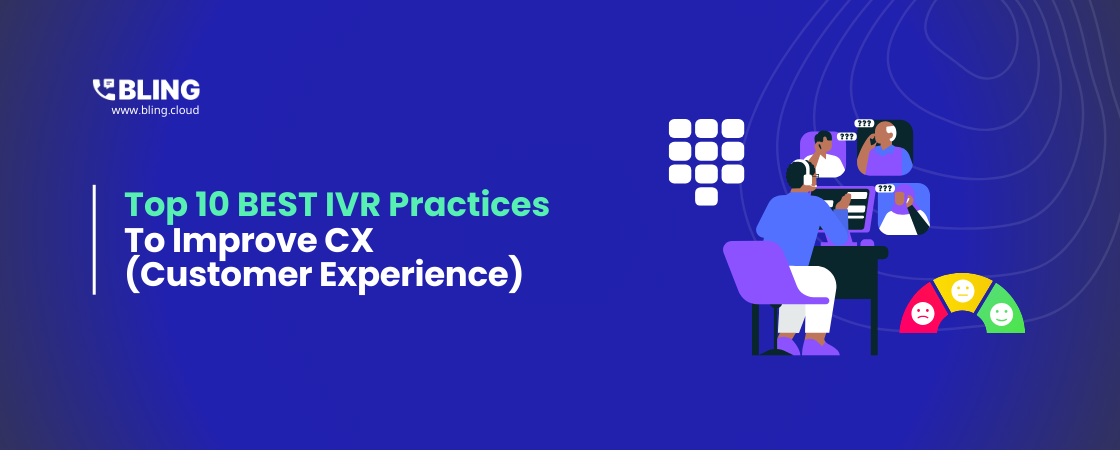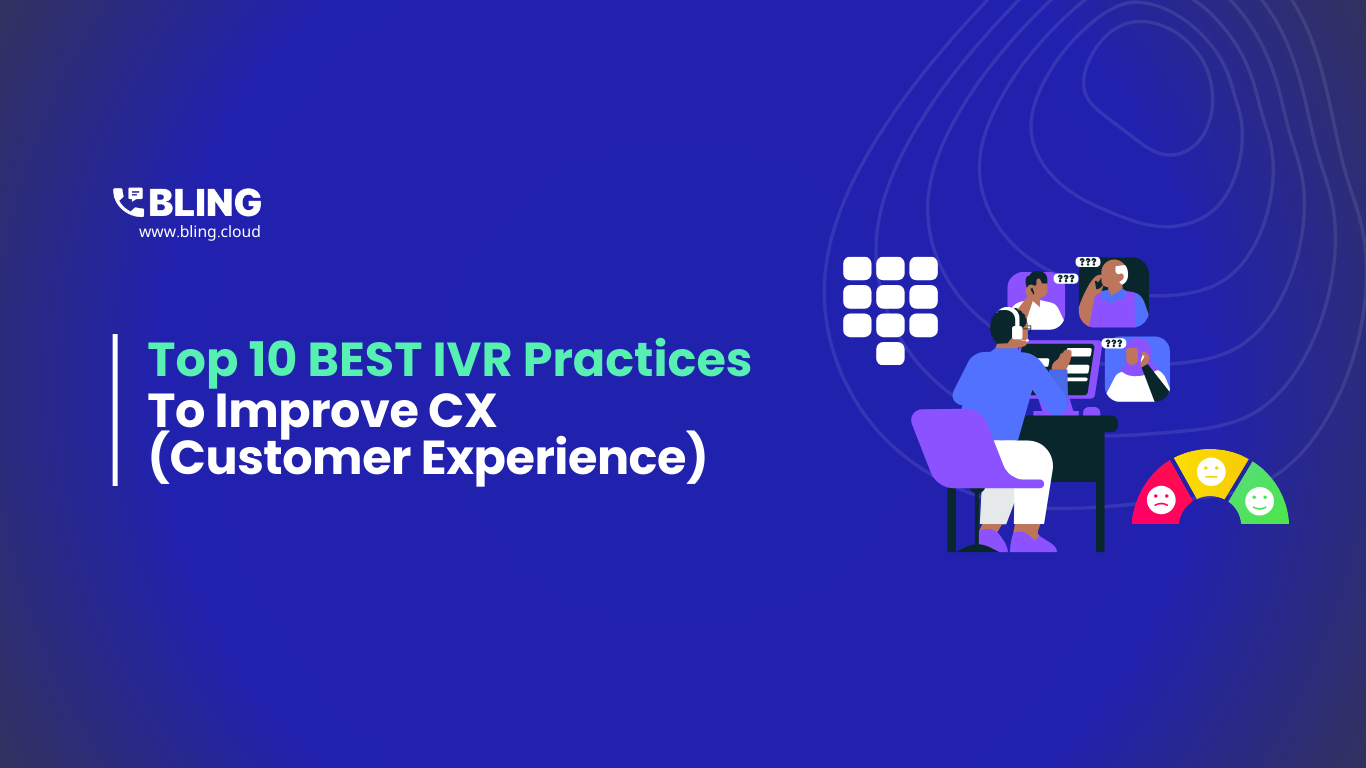


Top 10 IVR BEST Practices to Improve CX (Customer Experience)
Author: Asfandyar
Date: February 12, 2025
Customers may find IVR systems unfavorable due to the often lengthy process of navigating through prompts. However, businesses should prioritize customer satisfaction by adopting well-designed IVR practices to ensure a positive experience. IVRs typically act as the first point of contact, making streamlined options and routing essential.
IVRs are generally the First Point of Contact with the business. It’s essential that your IVR options and routing are smooth. While IVR systems can be cost-effective, improper design and implementation can harm the customer journey. Therefore, it is imperative to understand the capabilities of IVR and strive to create the most effective strategies.
IVR – A Self-Service Solution
Today's customers crave personalized and accessible experiences. An IVR system is a foundational element of a modern contact center, enabling customers to efficiently address basic issues and complete transactions independently.
IVRs aim to shorten wait times and ease the burden on staff. By adhering to IVR best practices, you can unlock benefits such as:
- Directing and prioritizing calls to the right teams.
- Sharing information, updates, promotions, and offers while customers are on hold.
- Enabling customers to resolve issues on their own, without needing an agent.
- Providing a 24/7, cost-effective self-service option.
- Utilizing voice recognition for a more natural, human-like interaction, allowing customers to speak their requests instead of using buttons.
By streamlining your IVR strategy and adopting best practices, businesses can boost customer satisfaction and foster customer loyalty.
IVR Best Practices That Businesses Can Apply To Improve Their CX - Customer Experience
Below are the best IVR guidelines to improve customer experience:
1. Keep the Main IVR Menu SimpleThe main menu sets the tone for the customer experience, so keep it short (under 30 seconds) and provide clear options to direct callers to the appropriate agent or resource quickly. Provide callers with a maximum of four options per menu. Making IVR menus straightforward simplifies navigation.
2. Make it Easy to Reach a Live AgentOffer callers the option to connect directly to a live agent in the main menu to avoid frustrating customers who need to resolve complex issues. Don't make them go deep into your IVR menu to do so. If a caller can’t figure out what to press, transfer them to a human for help instead of disconnecting the call.
3. Use a Human-Sounding VoiceMake a strong first impression by using a human-sounding voice for IVR prompts, which can be achieved through professional voice-over recordings or sophisticated text-to-speech technology. Outdated, robotic voices can create a negative perception of the IVR system. Ensure the voice conveys empathy and maintains a conversational tone to create a more natural and engaging customer experience.
4. Offer Multiple LanguagesProvide IVR menu options in multiple languages to ensure an inclusive customer experience. In the US, it’s common for call centers to offer support in English and Spanish, but if you have a global customer base, expand your language options accordingly. Be sure to carry their language selection throughout the entire call, routing the caller to resources and agents in their preferred language.
5. Provide Accurate Wait Time InformationInform callers of their position in the queue or how long their wait will be. It’s easier for callers to be patient if they know how long to expect to wait. If it’s a long wait, update them on their queue position at regular intervals or consider offering a call-back option. A call-back option saves your customers time by allowing them to request a return call instead of waiting in a long queue.
6. Review and Update the IVR Menu RegularlyRegularly review the IVR menu to remove outdated messaging and update information about new products, services, or departments. Keeping your IVR messages and menu current builds trust with callers. Also, error correction should always use different words to re-prompt the caller.
7. Integrate IVR with Omnichannel Engagement Strategy and Pass Along Customer-Entered InformationIntegrate your IVR call center with the rest of your channels to provide a seamless customer experience, ensuring the context of a call carries to other channels and vice versa. Capture any customer information entered (e.g., account number) and pass it along if the call needs to be handled by an agent to avoid frustrating callers by making them repeat information.
8. Utilize Voice Recognition and Barge-In Technologies:Implement voice recognition technology to understand and process what customers say, allowing them to respond to prompts using their voices for a smoother experience. If your IVR system doesn’t have a voice recognition feature, include barge-in functionality, which allows customers to interrupt or speak over prompts without waiting for them to finish. Instructions should be provided only when an error is made.
9. Use Pleasant Hold Music and Good Call Quality:Use pleasant and high-quality hold music to create a positive experience for the caller. Consider instrumental music without lyrics. High-quality audio is essential for a positive IVR experience; clear, crisp sound ensures customers can easily understand menu options and instructions.
10. Use Wait Time Wisely:Use the wait time to promote additional communication channels (like email or chatbots) or highlight current promotions. This information is less intrusive when played during the wait time than if it were shared in the ivr menu.
In conclusion: IVR best practices play a crucial role in enhancing the customer journey by providing efficient self-service options. While IVR systems offer automation, leveraging them to retrieve customer call history and preferences can significantly improve the customer experience. Key strategies include streamlining IVR processes and setting realistic expectations to optimize both customer satisfaction and agent efficiency. Prioritizing a clear, user-friendly design and offering options in multiple languages further ensures accessibility and inclusivity. By implementing these practices, businesses can transform IVR from a source of frustration into a valuable tool that empowers customers and supports efficient call center operations.